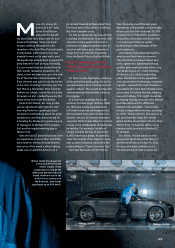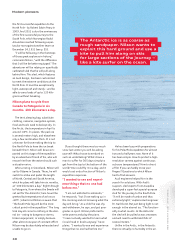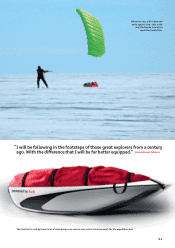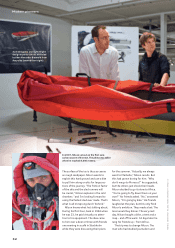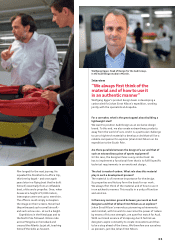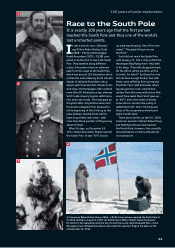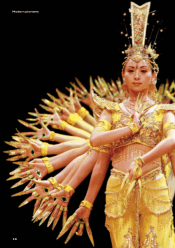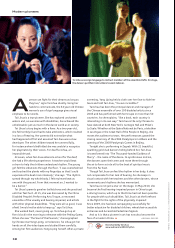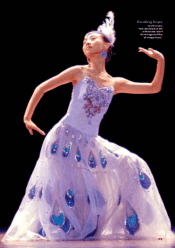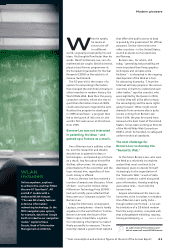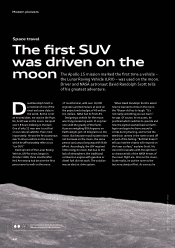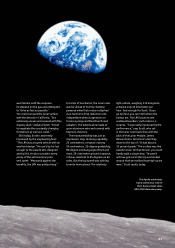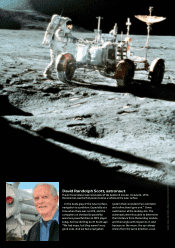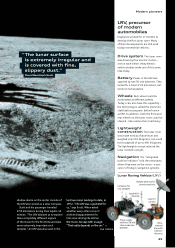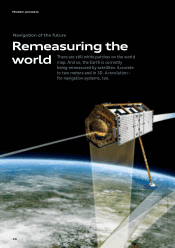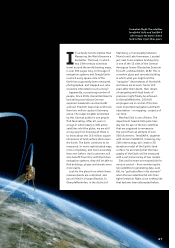Audi 2010 Annual Report Download - page 40
Download and view the complete annual report
Please find page 40 of the 2010 Audi annual report below. You can navigate through the pages in the report by either clicking on the pages listed below, or by using the keyword search tool below to find specific information within the annual report.
38
A
person can fi ght for their dreams as long as
they live,” signs Tai Lihua silently. Using her
hands to communicate, the 34-year-old Chinese
woman’s use of sign language gives visual
emphasis to her words.
Tai Lihua is a true pioneer. She has explored uncharted
waters and, as a woman with disabilities, has achieved the
unbelievable: just as much in the dance world as in society.
Tai Lihua’s story begins with a fever. As a two-year-old,
she fell terribly ill and had to take antibiotics, which resulted
in a loss of hearing. Her parents did not realize what
had happened at fi rst and assumed Tai Lihua was a slow
developer. The other children teased her unmercifully,
for instance when blindfolded she was unable to recognize
her playmates by their voices. For deaf Tai Lihua, an
impossible task.
At seven, when Tai Lihua entered a school for the deaf,
she had a life-altering experience. A teacher would beat
a drum to help the children understand rhythm. The young
girl felt the vibrations through the fl oor. “I was overwhelmed
and touched the planks with my fi ngertips so that I could
experience the beat more intensely,” she says. “The rhythm
spread through my whole body. I felt my heart beat as
one with the ground. From that moment on, I wanted to
be a dancer.”
Tai Lihua’s parents gave her ballet shoes and she practiced
until her feet hurt. At 15, she was discovered by the China
Disabled People’s Performing Arts Troupe, a renowned
ensemble of the visually and hearing impaired, and artists
with other physical disabilities. “They were all so good, I was
afraid I would not be able to keep up,” says Tai Lihua.
She worked hard, never giving up. Tai Lihua got up at
fi ve o’clock in the morning to rehearse with the Peking Opera.
When she saw “The Soul of the Peacock,” choreographed
by Chinese star Yang Liping, on television, Tai Lihua got her
hands on all the video tapes and studied them carefully.
Among her fi rst audiences: Yang Liping herself. After a private
screening, Yang Liping held a cloth over her face to hide her
tears and told Tai Lihua, “You are incredible!”
Tai Lihua has been the principal dancer and manager of
the Chinese ensemble of over 100 disabled artists since
2005 and has performed with her troupe in more than 50
countries. As she explains, “like a book, each country is
interesting in its own way.” Tai Lihua is the only Chinese to
have danced at both New York’s Carnegie Hall and Milan’s
La Scala. Whether at the Opéra National de Paris, a telethon
in Las Vegas or the Great Hall of the People in Beijing, she
moves the audience to tears. Her performances graced the
closing ceremony of the 2004 Paralympics in Athens and the
opening of the 2008 Paralympic Games in Beijing.
Tonight she is performing in Zagreb. With 21 beautiful,
sparkling gold-clad dancers hiding behind her, Tai Lihua
is transformed into “The Thousand-handed Goddess of
Mercy” – the name of the dance. In synchronous motion,
the dancers open their arms and move them through
the air to form a circle all to the beat of spiritual music
from the Far East.
Though Tai Lihua can feel the rhythm in her body, it does
not compensate for her lack of hearing. So she keeps in
visual contact with her teachers and the other dancers, whose
movements and rhythms she has memorized.
Tai Lihua is not just a star on the stage. In May 2010, she
became the fi rst hearing-impaired person in China to get
a driving licence, which up to that time had not been possible
for people with such disabilities. Tai Lihua is at the forefront
in the fi ght for the rights of the physically impaired:
Since 2009, she has been campaigning successfully for
better education for disabled children, wheelchair-accessible
entrances and Accessible Pedestrian Signals.
And so it is that a pioneer in art has now also become the
face of a modern China. ADRIAN GEIGES
Tai Lihua uses sign language to instruct members of the ensemble (left). On stage,
the dancers put their instructions to work (above).
Modern pioneers
PHOTOS | PETERLIN/LAIF (2); LU JUNDE/IMAGINECHINA/LAIFLU JUNDE/IMAGINECHINA/LAIF
Be enchanted by Tai Lihua:
www.audi.com/ar2010/rhythm



